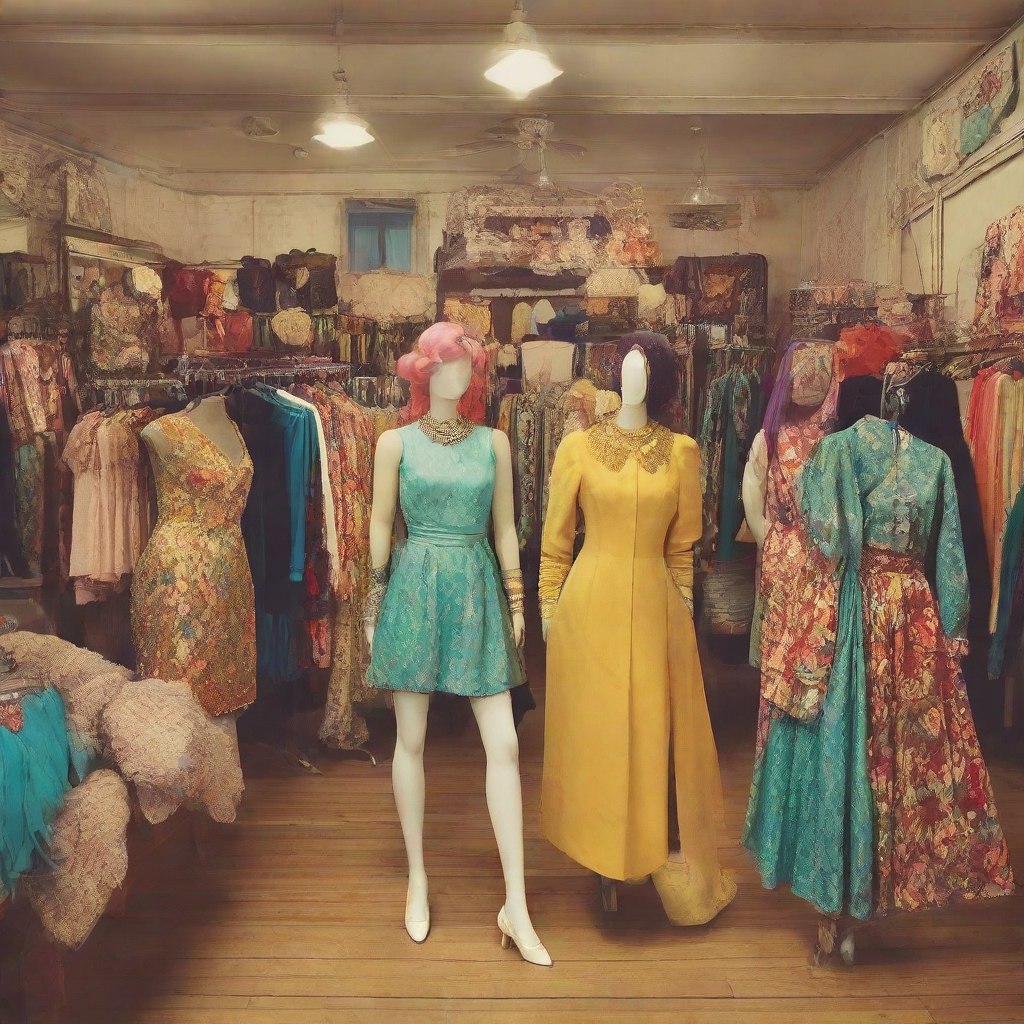Are you drawn to the charm and nostalgia of bygone eras? Do you have a passion for fashion that transcends trends and time periods? If so, opening a vintage clothing store could be your ticket to turning your love for vintage and retro styles into a thriving business. In this comprehensive guide, we’ll walk through the steps to help you bring your dream of owning a vintage clothing boutique to life. Get ready to step back in time and share your passion for timeless fashion with the world!
Embracing the Appeal of Vintage Clothing
Before diving into the details of opening a vintage clothing store, it’s essential to understand the enduring appeal of vintage fashion. Vintage clothing offers a unique blend of history, craftsmanship, and style that sets it apart from modern fashion trends. From elegant silhouettes of the 1920s to the bold prints of the 1980s, vintage clothing allows individuals to express their individuality and creativity through fashion.
One of the main attractions of vintage clothing is its sustainability and eco-friendliness. By choosing pre-owned garments over fast fashion, vintage enthusiasts can reduce waste and minimize their environmental impact while indulging in their love for fashion. Additionally, vintage clothing often boasts higher quality materials and construction than contemporary mass-produced garments, making it a desirable choice for those seeking durability and character in their wardrobe.
Identifying Your Niche and Target Market
When opening a vintage clothing store, it’s essential to identify your niche and target market to differentiate yourself from competitors and attract the right customers. Consider what sets your boutique apart and who your ideal customers are. Are you catering to lovers of 1950s pin-up style, 1970s bohemian chic, or eclectic 1990s grunge?
To help you narrow down your niche, here are some potential target markets for a vintage clothing store:
| Target Market | Description |
|---|---|
| Decade-specific enthusiasts | Individuals who are passionate about the fashion of a specific decade, such as the 1960s mod style or the 1980s new wave era. |
| Occasional shoppers | People looking for unique outfits for special events, themed parties, or costume occasions, such as weddings, proms, or Halloween. |
| Collectors | Enthusiasts who collect vintage clothing as a hobby or investment, seeking rare and valuable pieces to add to their collection. |
| Everyday wearers | Individuals who incorporate vintage pieces into their everyday wardrobe, mixing and matching vintage and modern styles for a unique look. |
Once you’ve identified your target market, conduct market research to understand their preferences, spending habits, and shopping behavior. This information will help you curate your inventory and tailor your marketing efforts to attract and retain customers.
Curating Your Vintage Collection
With your target market identified, it’s time to start curating your vintage collection. Whether you’re sourcing clothing from thrift stores, estate sales, flea markets, or online marketplaces, it’s essential to select pieces that reflect your boutique’s aesthetic and appeal to your target audience.
Here are some tips for curating your vintage collection:
- Define your aesthetic: Develop a clear vision for your boutique’s aesthetic and style, whether it’s romantic Victorian dresses, funky 1970s prints, or minimalist 1990s grunge.
- Research trends: Stay informed about current fashion trends and vintage revival movements to identify which styles are in demand and resonate with your target audience.
- Inspect for quality: Thoroughly inspect each vintage piece for signs of wear, damage, or alterations, ensuring that only high-quality garments make it into your collection.
- Offer a variety of sizes: Stock a range of sizes to accommodate customers of all body types and ensure inclusivity and accessibility in your boutique.
Consider offering a diverse selection of vintage clothing, including dresses, tops, bottoms, outerwear, and accessories, to appeal to different tastes and style preferences. Pay attention to popular brands, designers, and trends from the eras you specialize in, and be on the lookout for rare and unique pieces that will set your boutique apart from the competition.
Setting Up Your Vintage Boutique
Now that you’ve curated your vintage collection, it’s time to set up your boutique and create a welcoming and visually appealing space for customers to shop and explore. Choose a location that aligns with your target market and offers good visibility, foot traffic, and parking options.
When designing your vintage boutique, consider the following factors:
- Layout and decor: Create a layout that allows customers to easily browse and navigate your boutique, with clear signage and designated areas for different clothing categories.
- Display fixtures: Invest in display fixtures such as racks, shelves, and mannequins to showcase your vintage collection effectively and attractively.
- Ambiance: Set the tone for your boutique with music, lighting, and decor elements that reflect your brand identity and create a memorable shopping experience for customers.
- Point-of-sale system: Choose a point-of-sale system that is user-friendly and efficient for processing transactions, managing inventory, and tracking sales.
Consider incorporating vintage-inspired elements into your boutique’s decor, such as retro furniture, antique mirrors, or nostalgic signage, to enhance the ambiance and immerse customers in the vintage shopping experience. Remember to prioritize comfort and accessibility for customers of all ages and abilities, and ensure that your boutique complies with any local zoning and building regulations.
Marketing and Promoting Your Vintage Boutique
Now that your vintage boutique is ready to welcome customers, it’s time to spread the word and attract shoppers! Developing a comprehensive marketing strategy is essential for building brand awareness, driving foot traffic, and generating sales.
Here are some effective marketing strategies to consider:


